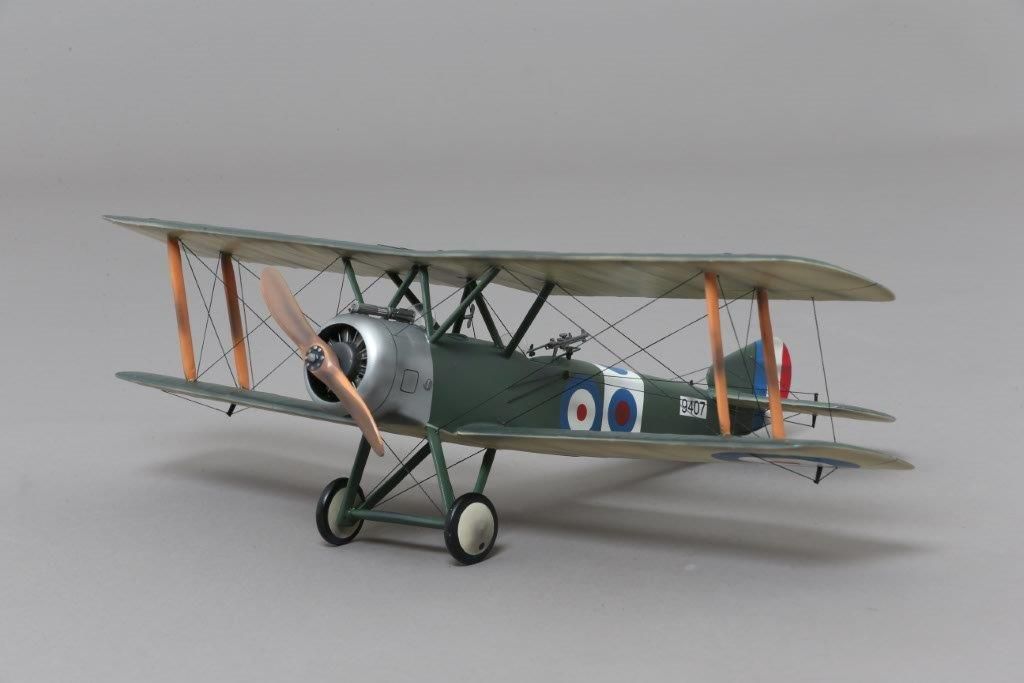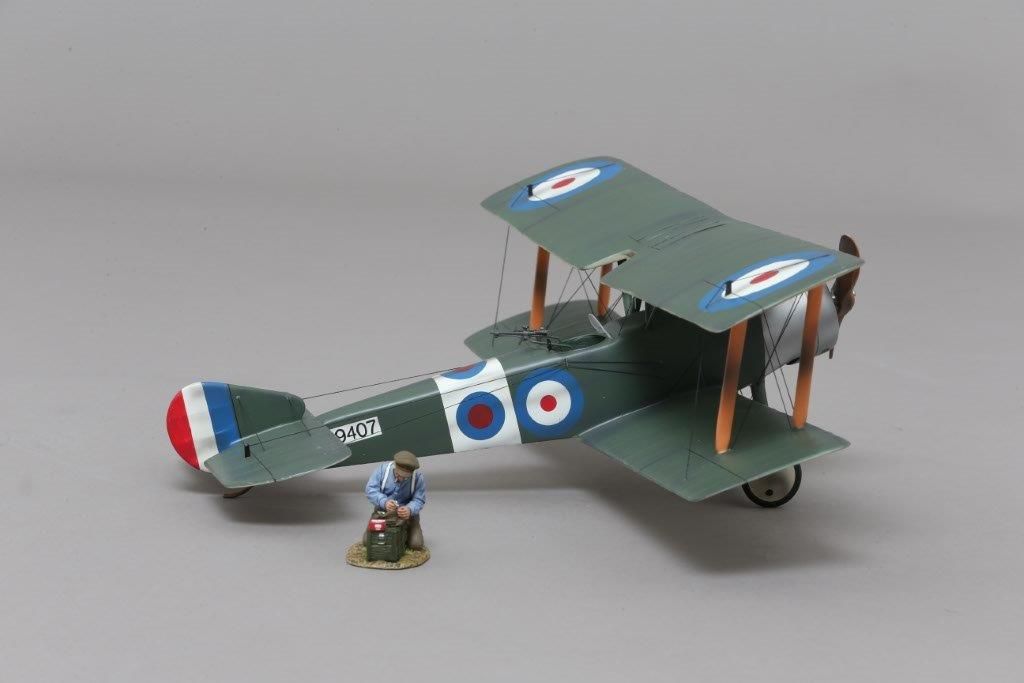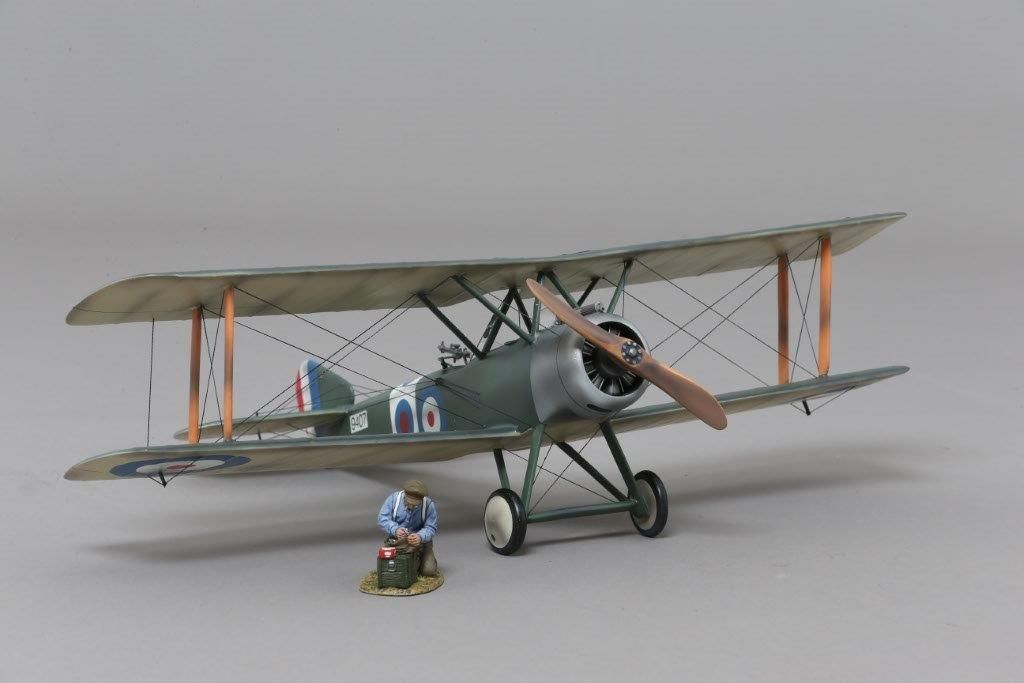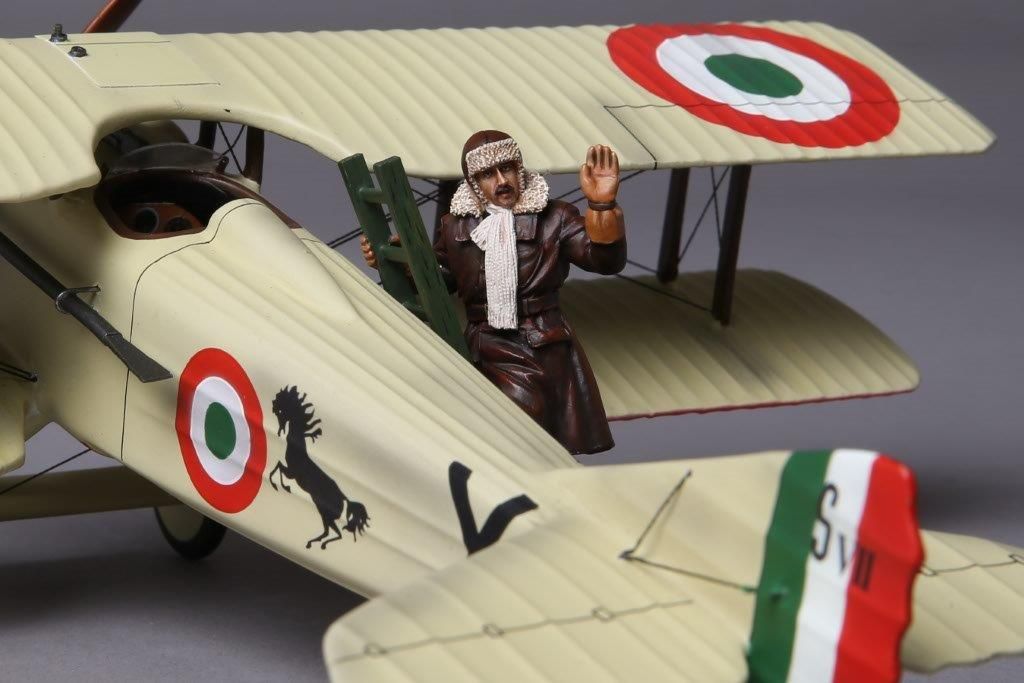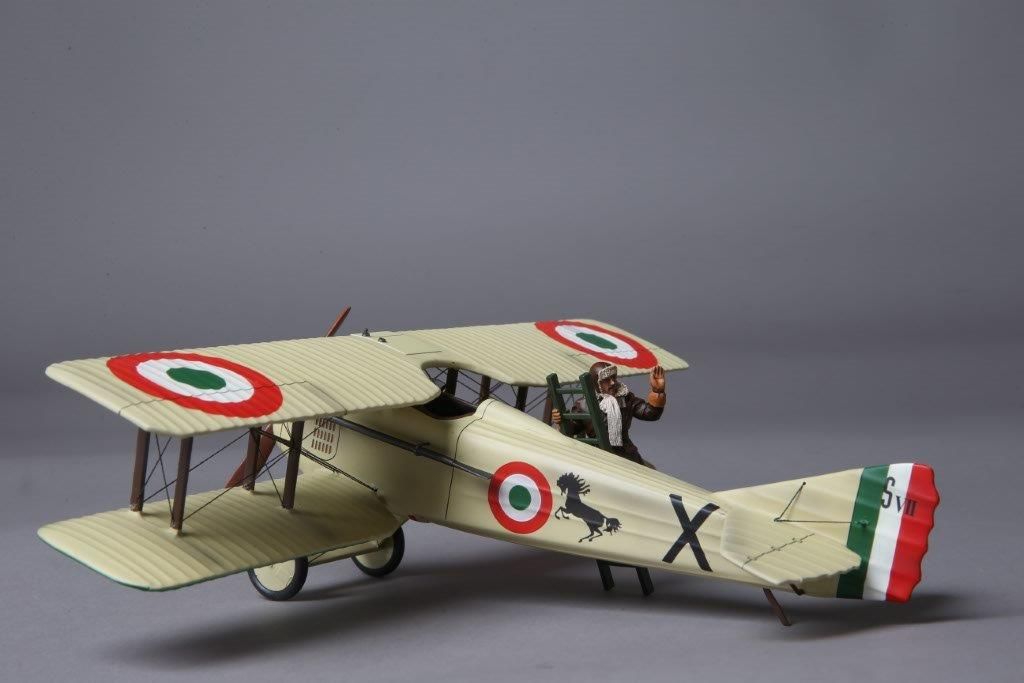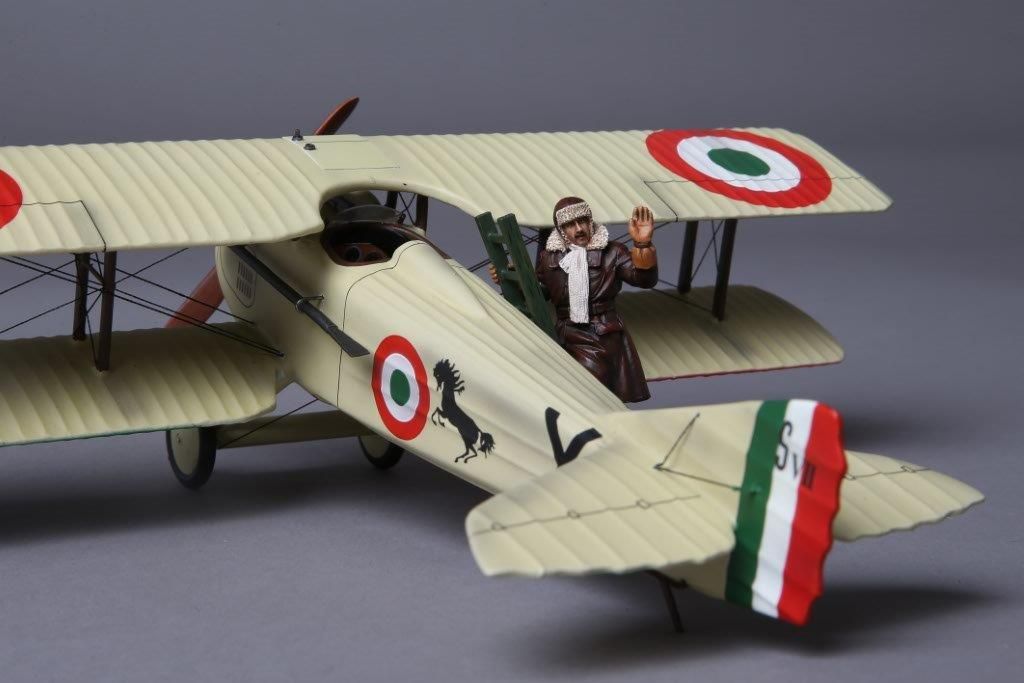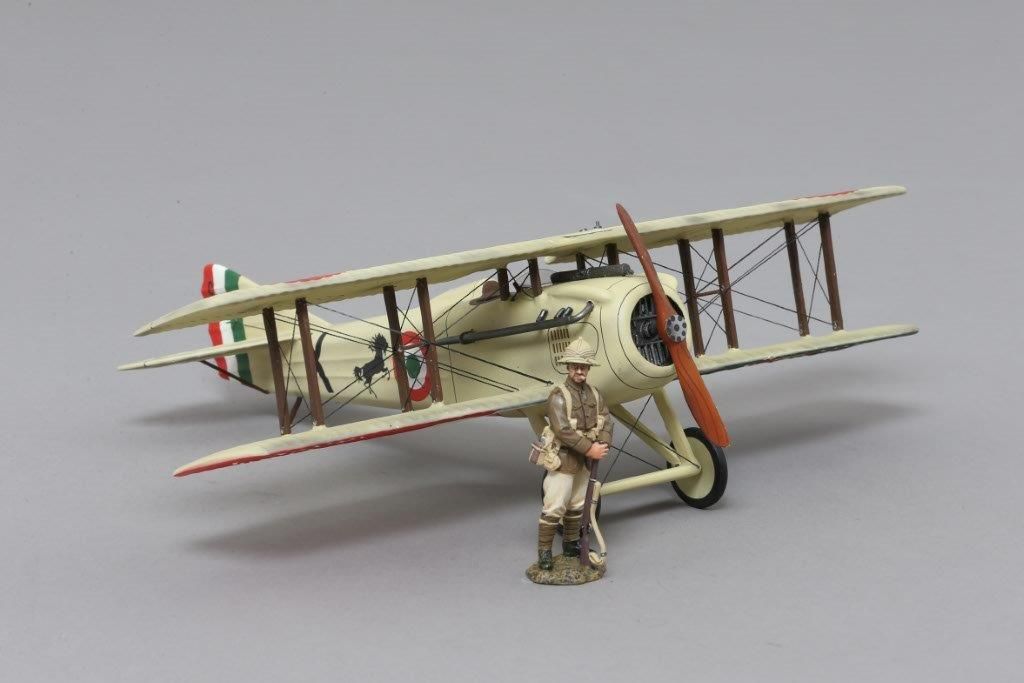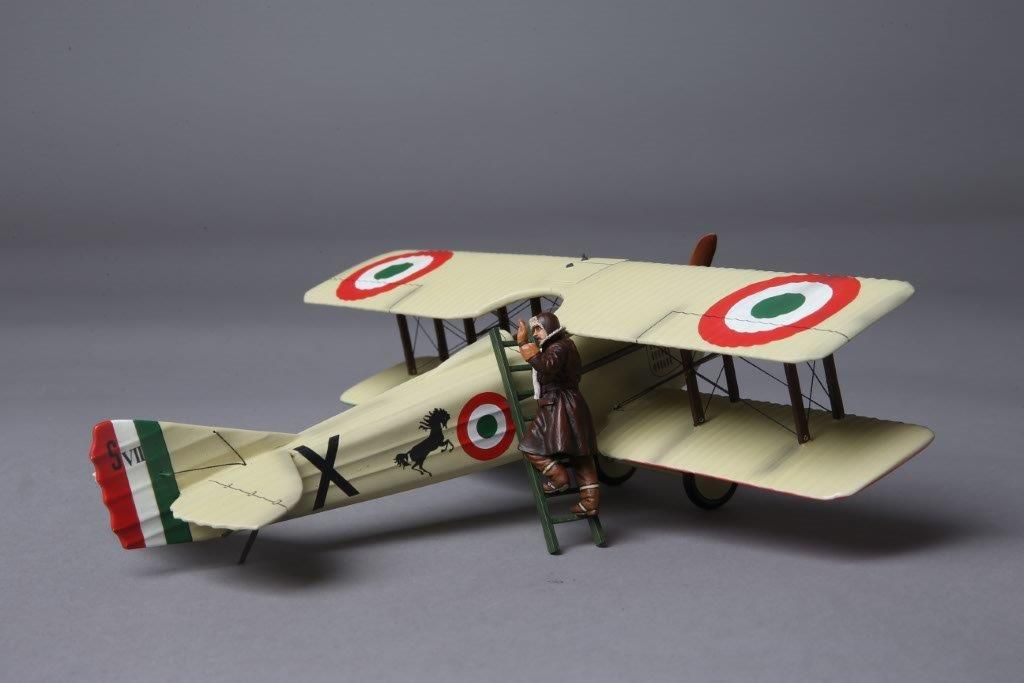A note on Baracca's aircraft markings: Many know that 34 victory ace Francesco Baracca carried the famous prancing horse insignia as his personal marking on his aircraft. He started carrying this marking in the spring of 1917 on his Nieuport fighter and then his Spad 7 when it replaced the Nieuport. The insignia was a nod to his previous regiment, the Piemonte Reale Cavalleria, which he had joined in 1910. By May, 1917, Baracca and several other Italian aces had been gathered together in 91 Squadriglia, an elite unit, of which Baracca eventually took command. By the spring of 1918, the decision had been made to adopt a Griffin insignia as the squadron marking, to be displayed with any personal marking the pilot preferred. At this point Baracca started to display his prancing horse on the port side of the fuselage and the Griffon on the starboard side. You will note that the TGM Spad 7 carries the prancing horse on both sides of the fuselage. This is quite correct as the aircraft depicts one of the many Spads flown by Baracca and would date the aircraft in the time period of May, 1917, to early spring, 1918, prior to the Griffon insignia being adopted. You will also note that the TGM Spad carries no serial number as not all of Baracca's aircraft have been identified with one. The 'X' marking is the Roman Numeral 10, another of Baracca's markings that was not universal to all his aircraft. The wing and fuselage roundels are also correct, red outer ring, white middle ring, green center, although there exist roundels in the opposite color configuration, there is no known reason for the differences. The Spads were all imported aircraft from France, so there exists the distinct possibility that the Italians simply adapted the French roundel to an Italian roundel by simply painting the French blue center with Italian green.
Baracca is still a famous and respected name in Italy and his fame lives on in the Ferrari prancing horse emblem, as well as being carried on the aircraft of the Italian Air Force Groups IX and X. -- Al
